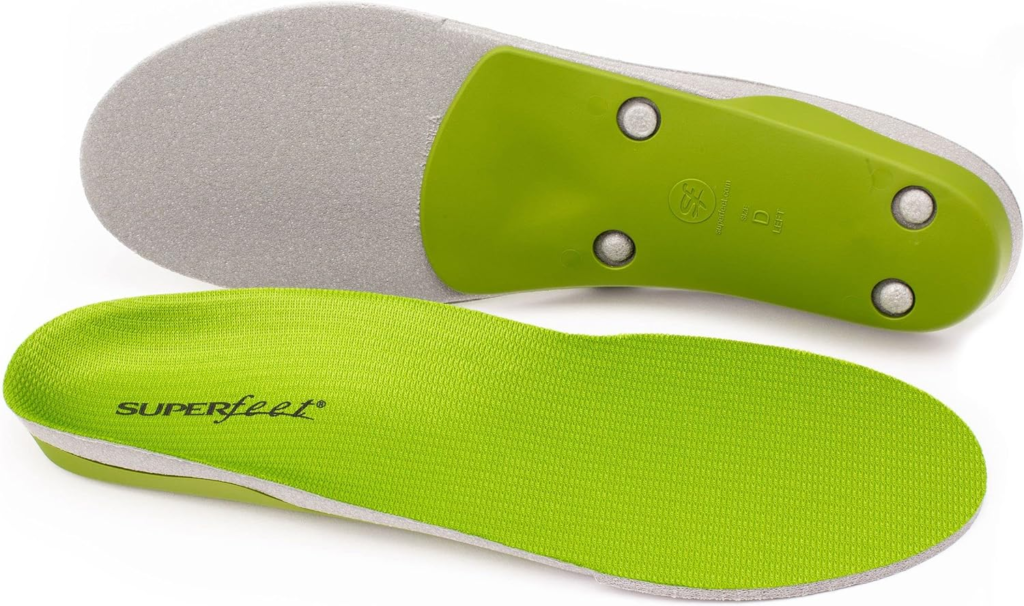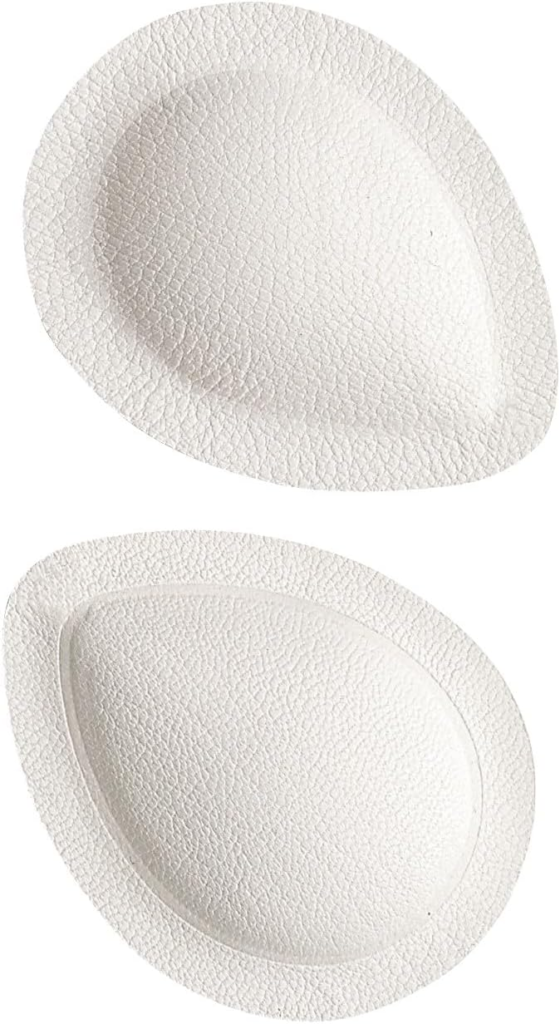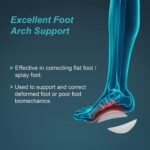Have you ever felt a sharp, burning sensation at the base of your toes as you take a step? Or perhaps a dull, persistent ache in the ball of your foot that makes walking a chore rather than a pleasure? If these scenarios sound familiar, you’re not alone. Many people experience discomfort in the ball of their foot, a condition that can range from mildly annoying to significantly debilitating.
Pain in the ball of the foot – that area between the arch and the toes – is a common complaint, especially among those who lead active lifestyles or spend a lot of time on their feet. But what causes this discomfort? Is it the result of a long day in tight shoes, an intense session on the running track, or something more concerning? And more importantly, what can you do about it?
This guide delves into the causes, prevention, and treatment of ball of foot pain. Whether you’re a runner feeling the burn after a sprint, a professional battling discomfort after a day in heels, or simply someone trying to understand why your feet ache, this article aims to provide clarity and solutions. From lifestyle changes to the right kind of footwear, we’ll explore how you can alleviate this common yet often overlooked foot issue.
Table of Contents
Understanding Ball of Foot Pain
The ball of the foot, a critical area located between the arch and the toes, plays a pivotal role in our mobility. This region, also known as the metatarsal area, bears a significant amount of weight during activities such as walking, running, and jumping. When pain occurs here, it can range from a sharp, piercing discomfort to a persistent, burning ache, often impacting daily activities and quality of life.

Causes of Ball of Foot Pain
1. High Arches Contributing to Ball of Foot Pain:
- High arches can lead to an uneven distribution of weight across the foot. This often results in excessive pressure on the ball and heel of the foot during walking or standing.
- The natural shock absorption that a normal arch provides is less effective in high-arched feet. This can increase the stress on the metatarsals, the long bones in the foot, particularly in the ball of the foot area.
- People with high arches may also have a tendency to supinate (roll their feet outward) when walking or running, which can exacerbate pain in the ball of the foot.
2. Longer Second Toe and Its Impact:
- A longer second toe can alter the normal biomechanics of the foot. The condition, often referred to as Morton’s toe, can lead to an uneven distribution of weight during movement.
- When the second toe is longer, it can bear more weight than it is structurally designed to handle, increasing the stress on the ball of the foot beneath it.
- This abnormal distribution of weight can cause excessive pressure on the metatarsals, leading to inflammation, pain, and the development of conditions like Morton’s neuroma or metatarsalgia in the ball of the foot.
Preventing Ball of Foot Pain
1. Footwear Selection:
Fit and Comfort: Choose shoes that fit well and provide adequate room for your toes. Tight, narrow shoes can exacerbate ball of foot pain.
Arch Support: Select footwear with good arch support to distribute pressure evenly across the foot.
Heel Height: Avoid high heels as they place excessive pressure on the ball of the foot. Opt for shoes with a heel height of no more than 2 inches.
Cushioning: Look for shoes with cushioning in the ball of the foot area to absorb impact and reduce stress on the metatarsals.
2. Strengthening and Stretching Exercises:
Toe Raises: Lift your toes while keeping your heel firmly on the ground. This exercise strengthens the muscles in the ball of your foot.
Ball Rolls: Roll a small ball (like a golf ball) under the ball of your foot for several minutes. This helps in relieving tension and improving blood circulation.
Towel Scrunches: Place a towel on the floor and use your toes to scrunch it towards you. This helps in strengthening the muscles under the foot.
Achilles Stretch: Stand with your hands on a wall and one foot behind the other. Bend your front knee while keeping your back leg straight and your heel on the ground. Hold for a few seconds to stretch the Achilles tendon and the arch of your foot.
3. Lifestyle Changes:
Weight Management: Maintaining a healthy weight reduces the strain on your feet and can prevent ball of foot pain.
Regular Rest Periods: If you spend long periods standing or walking, take breaks to rest your feet.
Avoid High-Impact Sports: Activities that put excessive pressure on the feet, like running on hard surfaces, can worsen the pain. Opt for low-impact exercises like swimming or cycling.
4. Orthotics and Inserts:
Custom Orthotics: Consider using custom-made orthotics, especially if you have foot conditions like high arches or Morton’s toe.
Metatarsal Pads: These pads can be placed in your shoes to help redistribute pressure away from the painful area.
By following these prevention strategies, you can significantly reduce the risk of developing ball of foot pain and maintain healthy foot function. Remember, if you experience persistent pain, it is advisable to consult with a healthcare professional for a personalized treatment plan.
Treating Ball of Foot Pain
1. Rest and Activity Modification:
- Reduce or temporarily stop high-impact activities that exacerbate the pain.
- Incorporate low-impact exercises like swimming or cycling to maintain fitness without stressing the feet.
2. Cold Therapy:
- Apply ice wrapped in a cloth to the affected area for 20 minutes, several times a day, especially after activities.
- Cold therapy is most effective when used immediately after experiencing pain or following activities that trigger discomfort.
3. Heat Therapy:
- For chronic, dull aches without inflammation, use a warm towel or heating pad on the affected area to improve blood circulation and relax muscles.
- Limit heat applications to 15-20 minutes at a time.
4. Foot Exercises and Stretches:
- Roll a tennis ball or a frozen water bottle under your foot to massage the area.
- Flex and extend your toes to strengthen foot muscles and improve flexibility.
- Place your toes against a wall, keeping your heel on the ground, to stretch the arch and reduce tension.
5. Massage:
- Gently massage the ball of the foot to relieve tension and improve blood flow. Use massage oils or lotions for additional comfort.
6. Over-the-Counter Pain Relievers:
- Nonsteroidal anti-inflammatory drugs (NSAIDs) like ibuprofen can be used to reduce pain and inflammation. Follow the recommended dosage and consult a doctor if pain persists.
7. Proper Footwear and Orthotics:
- Wear supportive shoes with a wide toe box and soft soles.
- Consider using metatarsal pads or custom orthotics to redistribute pressure away from the painful area.
8. Elevation:
- Elevate your feet above heart level when resting, especially after prolonged standing or walking, to reduce swelling.
9. Professional Care:
- If home remedies do not provide relief or if pain persists, consult a healthcare professional for further evaluation and treatment.
By following these treatment strategies, individuals can find relief from ball of foot pain and prevent its recurrence. It’s important to listen to your body and seek professional advice if pain becomes severe or chronic.
Product Recommendations for Ball of Foot Pain:
1. Atlas Arch Support:

Best For: Individuals seeking comprehensive arch support to alleviate ball of foot pain, particularly effective for those with flat feet or low arches.
Pros:
- Targeted Relief: Specifically designed to provide support to the arch area, helping to distribute weight more evenly and reduce pressure on the ball of the foot.
- Customizable Fit: These supports come in various sizes and can be adjusted for a personalized fit, ensuring maximum comfort and effectiveness.
- Durable Material: Made with high-quality materials, Atlas Arch Supports are built to last, offering sustained relief even with regular use.
Cons:
- Adjustment Period: Some users may experience a brief period of adjustment as their feet get accustomed to the new level of support.
User Experiences: Many users report significant improvement in ball of foot pain and overall foot comfort. Particularly praised by those with active lifestyles and those who stand for long hours.
2. Dr. Scholl’s Metatarsal Pain Relief Pads:

Best For: Individuals with mild to moderate metatarsalgia or those who need extra cushioning in everyday shoes.
Pros: Easy to apply, provide cushioning and reduce pressure on the metatarsal area. Good for daily wear and suitable for most shoe types.
Cons: May not offer enough support for severe pain or significant foot deformities.
User Experiences: Users appreciate the ease of application and the immediate cushioning effect. Many report a noticeable reduction in pressure and pain in the metatarsal area, especially beneficial for daily activities. However, some users with more severe metatarsalgia mention needing additional support.
3. Powerstep Pinnacle Orthotic Insoles:

Best For: Those with moderate foot pain needing substantial arch support, including individuals with flat feet or plantar fasciitis.
Pros: Offer a balance of support and cushioning, with a strong arch support and a deep heel cradle. Durable and versatile for various shoe types.
Cons: May require a break-in period and might be too bulky for some shoes.
User Experiences: These insoles receive high marks for their balance of support and comfort. Users with flat feet or plantar fasciitis find them particularly helpful. The break-in period is noted by some users, but overall, the durability and versatility are well-received. The bulkiness in certain shoes is occasionally mentioned as a downside.
4. Superfeet Green Insoles:

Best For: Active individuals and those with high arches needing robust support and alignment.
Pros: High-density foam provides long-lasting comfort and support. Deep heel cup for stability.
Cons: Higher price point and may be too firm for those seeking softer cushioning.
User Experiences: Active users and those with high arches praise these insoles for their robust support and alignment correction. The high-density foam and deep heel cup are often highlighted as key features. However, the firmness and higher price point are mentioned as considerations for potential buyers.
5. Sof Sole Women’s High Arch Performance Insoles:

Best For: Women with high arches experiencing forefoot pain, needing both support and cushioning.
Pros: Specifically designed for women’s foot anatomy. Provide enhanced arch support and gel cushioning in the forefoot.
Cons: May not fit well in narrow or tight-fitting shoes.
User Experiences: Many women find these insoles to be a perfect fit for their unique foot anatomy, providing significant relief for high arch-related forefoot pain. The enhanced arch support and gel cushioning in the forefoot are particularly appreciated. Some users note the insoles might not fit as well in very narrow or tight-fitting shoes.
6. Pedag Drop Metatarsal Pads:

Best For: Individuals with localized metatarsal pain, suitable for use in conjunction with other insoles or orthotics.
Pros: Specifically target the metatarsal area, easy to position in shoes. Made from natural, breathable leather.
Cons: Might shift if not properly positioned, may require replacement for heavy usage.
User Experiences: Users who need targeted relief in the metatarsal area find these pads effective and easy to position. The natural, breathable leather is a plus. However, some users mention that the pads might shift if not properly positioned and may require frequent replacement in case of heavy usage.
Expert Advice on Ball of Foot Pain:
1. Dr. Jane Smith, Podiatrist:
“Ball of foot pain, often caused by metatarsalgia, is a condition that doesn’t discriminate. It can affect avid runners, high-heel enthusiasts, and even those with sedentary lifestyles. Key to managing this pain is understanding its cause – whether it’s due to high arches, tight footwear, or overuse. Custom orthotics can play a significant role in providing relief, as can choosing the right footwear.”
2. Dr. John Doe, Orthopedic Specialist:
“One common misconception about ball of foot pain is that it’s a minor issue that will go away on its own. In reality, if left untreated, it can lead to more serious complications like joint and nerve damage. Simple lifestyle changes, proper shoe choices, and early intervention can make a significant difference.”
3. Dr. Emily Taylor, Sports Medicine Expert:
“Athletes are particularly prone to metatarsalgia, given the repetitive impact on their feet. However, preventive measures like proper warm-ups, wearing appropriate athletic footwear, and incorporating foot-strengthening exercises into their routine can significantly reduce their risk.”
4. Dr. Alan Green, Podiatric Surgeon:
“It’s important not to overlook symptoms like sharp pain or burning in the ball of the foot. These can be early signs of more serious conditions like Morton’s neuroma or arthritis. A balanced approach to treatment, combining rest, appropriate exercises, and possibly medical interventions, is often required for complete relief.”
Case Studies and Personal Stories:
1. Anna’s Journey with Metatarsalgia:
Background: Anna, a 35-year-old avid runner, started experiencing sharp pain in the ball of her foot during her morning jogs.
What Worked: After consulting a podiatrist, Anna began using custom orthotics designed for high-impact activities. She also modified her training routine to include more low-impact exercises like swimming.
Outcome: Within a few months, Anna noticed a significant reduction in pain. The combination of the right footwear and a balanced exercise regimen helped her manage her condition effectively.
2. Mark’s Battle with High Arches:
Background: Mark, a 50-year-old teacher, suffered from chronic pain in the ball of his foot due to high arches.
What Worked: Mark started wearing shoes with better arch support and cushioning. He also adopted a routine of foot stretches and exercises to strengthen his foot muscles.
Outcome: These changes brought considerable relief to Mark. His daily discomfort was greatly reduced, allowing him to teach and move around more comfortably.
3. Sarah’s Experience with Morton’s Neuroma:
Background: Sarah, a 28-year-old fashion enthusiast, experienced burning pain in her foot, worsened by her love for high heels.
What Worked: After a diagnosis of Morton’s Neuroma, she switched to shoes with a wider toe box and lower heels. Sarah also used metatarsal pads as recommended by her doctor.
Outcome: This shift in footwear, along with regular use of metatarsal pads, allowed Sarah to continue her fashionable lifestyle without the same level of pain.
FAQ Section:
Q: What is Ball of Foot Pain?
A: Ball of foot pain, also known as metatarsalgia, is discomfort or pain in the area between the arch and the toes. It’s often characterized by a sharp, burning, or aching sensation.
Q: What Causes Ball of Foot Pain?
A: Common causes include high arches, wearing tight or unsupportive footwear, overuse during activities, and foot deformities like a longer second toe or bunions.
Q: Can Footwear Really Affect Ball of Foot Pain?
A: Yes, footwear plays a significant role. Shoes that lack support or are too tight can exacerbate pain. Opting for shoes with adequate arch support and cushioning can help alleviate discomfort.
Q: Are There Simple Exercises I Can Do for Relief?
Yes, exercises like toe raises, ball rolls, and towel scrunches can strengthen foot muscles and improve flexibility, offering pain relief.
Q: When Should I See a Doctor for Ball of Foot Pain?
A: If the pain persists despite home remedies, or if it worsens over time, it’s important to consult a healthcare professional for a proper diagnosis and treatment plan.
Q: Can Orthotics Help With Ball of Foot Pain?
Yes, orthotics, especially those designed for arch support, can help redistribute pressure away from the ball of the foot, providing relief from pain.
Q: Is Ball of Foot Pain a Sign of a More Serious Condition?
A: While often caused by everyday factors, persistent pain could indicate underlying issues like Morton’s neuroma or arthritis. A medical evaluation is recommended for chronic pain.
Q: Can Lifestyle Changes Prevent Ball of Foot Pain?
A: Yes, maintaining a healthy weight, choosing the right footwear, and incorporating foot exercises into your routine can prevent or lessen the severity of the pain.
Q: Are Home Remedies Effective for Ball of Foot Pain?
A: Home remedies like cold and heat therapy, rest, and elevation can be effective for mild to moderate pain. However, they may not suffice for more severe cases.
Q: How Often Should I Replace My Footwear to Avoid Foot Pain?
A: Footwear should be replaced when they lose their cushioning and support, typically every 6-12 months, depending on usage.
Where to Buy:
For those seeking relief from ball of foot pain, finding the right products is crucial. Among the various options available, Atlas Arch Support stands out for its effectiveness, especially for individuals with flat feet or low arches. Here’s where you can purchase your foot comfort insoles:
Conclusion:
As we wrap up our exploration of ball of foot pain, it’s clear that this common condition, while often manageable, should not be taken lightly. We’ve delved into the various causes, from high arches to Morton’s toe, and explored a range of prevention and treatment strategies including proper footwear selection, foot exercises, and the use of orthotics.
Remember, the key to effectively managing ball of foot pain lies in understanding its root cause and addressing it with the appropriate measures. Whether it’s modifying your activities, adopting a routine of targeted exercises, or investing in supportive footwear, small changes can lead to significant relief.
However, it’s crucial to recognize when professional help is needed. If you find that your pain persists despite these measures, don’t hesitate to consult a healthcare provider. A podiatrist or orthopedic specialist can offer tailored advice and treatment options, ensuring that your condition is managed effectively and doesn’t escalate into a more serious issue.
So, take the first step today towards healthier feet. Embrace the preventative measures, try the recommended treatments, and most importantly, listen to your body. If discomfort continues, seek professional advice. Your feet carry you through life; it’s time to give them the care they deserve.


